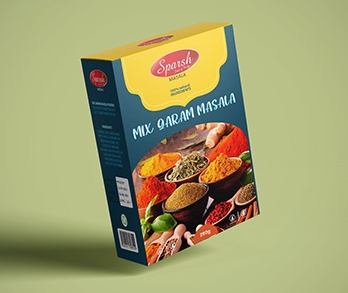Masala Box Packaging Design: A Blend of Tradition and Modern Aesthetics
In a world where packaging can make or break a product’s success, masala box packaging design holds a special place in the culinary market. With the growing interest in Indian cuisine and the emphasis on authenticity, how a masala box looks can significantly impact consumer choices. This article delves into the essentials of effective masala box packaging design, exploring its cultural significance, design elements, and marketing potential.
Understanding Cultural Significance
Masala boxes, often adorned with vibrant colors and intricate patterns, are more than just containers; they symbolize a rich culinary heritage. Traditionally known as “masala dabbas,” these boxes are an integral part of Indian kitchens, used to store various spices that are vital to regional cuisines. Effective packaging design should respect this cultural background while appealing to contemporary consumers. Emphasizing traditional motifs can evoke nostalgia and a sense of authenticity, making the product more relatable. Moreover, incorporating educational elements about the spices within the box can enhance the consumer’s experience and foster a deeper appreciation for the culinary art.
Key Design Elements
When crafting an appealing masala box design, several elements come into play. First and foremost, color selection is crucial; warm tones like reds, yellows, and oranges can reflect the vibrancy of Indian cuisine. Typography should be clear and legible, yet reflect the cultural essence—using fonts that mimic traditional scripts can work well. Additionally, the choice of materials plays a pivotal role; eco-friendly packaging is increasingly popular among consumers today. This not only aligns with environmental concerns but also adds an element of sophistication and modernity to the packaging. Finally, ergonomic design—ensuring that the box is easy to open and refill—can significantly enhance user experience and practicality.
Boosting Marketing Potential
In a competitive marketplace, unique packaging can set a product apart. A well-designed masala box can serve as a marketing tool, capturing attention on crowded shelves. Highlighting key features such as organic or locally sourced spices directly on the packaging can attract health-conscious buyers. Consider utilizing storytelling in the packaging—sharing the origin of the spices or a family recipe can create an emotional connection with consumers. Social media also plays a significant role; a striking design can encourage consumers to share their culinary experiences online, further boosting brand visibility. By focusing on both aesthetic appeal and informative content, masala box packaging can become a powerful marketing asset in the culinary world.
In Conclusion
Masala box packaging design is not merely about aesthetics; it intertwines cultural significance, practical usability, and marketing prowess. By thoughtfully considering design elements and the story behind the product, brands can carve out a niche in the growing market for Indian spices. If you’re interested in enhancing your knowledge further or seeking inspiration for your own packaging design, don’t hesitate to explore more resources and make your masala box stand out!

